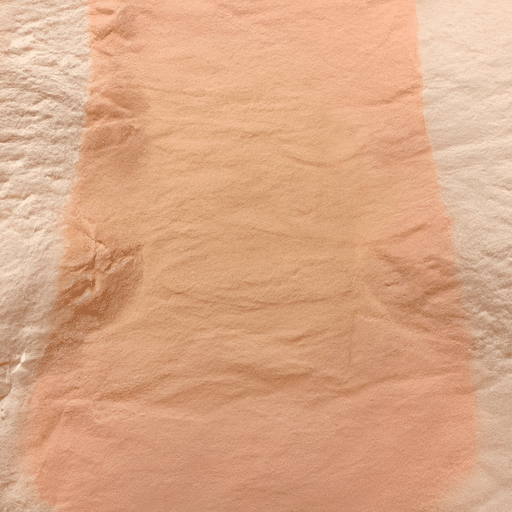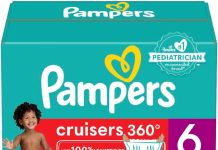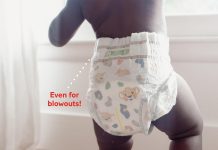We all want to ensure our safety and well-being, especially when it comes to personal hygiene products like menstrual pads. But how can we tell if a used pad is no longer safe to use? In this article, we will explore the signs of wear that indicate a pad may be unsafe, helping you make informed decisions about your menstrual hygiene. From discoloration to odor, we’ll cover all the potential red flags to keep an eye out for. So read on to learn how to identify signs of wear that make a used pad unsafe and ensure you stay healthy and protected.
Review contents
Improper Absorbency
When it comes to menstrual pads, one of the most important factors to consider is their absorbency. A pad with improper absorbency can lead to leaks, discomfort, and potential hygiene concerns. Signs of improper absorbency may include a pad that feels consistently wet or damp, even after a short period of use. You may also notice that the pad becomes heavy with fluid, indicating that it is not absorbing properly. If you find that your pad is not effectively soaking up menstrual flow, it may be a sign that it is no longer safe to use.
Leaks and Stains
Dealing with leaks and stains during your period can be frustrating and embarrassing. If you find that you are experiencing consistent leaks or stains while wearing a pad, it may be a sign that it is time to retire that particular pad. Leaks and stains can occur when a pad is no longer able to hold an adequate amount of menstrual flow or when the pad’s absorbent core becomes compromised. If you consistently find yourself dealing with leaks and stains, it’s a good idea to invest in new pads to ensure your comfort and confidence during your period.
Visible Tears or Rips
Take a close look at your used pads. If you notice any visible tears or rips in the pad’s surface, it is a clear indication that it is time to let go of that pad. Tears and rips can compromise the integrity of the pad, leading to reduced absorbency and potential leakage. Additionally, these damaged areas can be breeding grounds for bacteria, putting your vaginal health at risk. To ensure proper protection and hygiene, it is best to discard any pads that show signs of visible tears or rips.
Foul Odors
Foul odors are a definite red flag when it comes to used pads. If you notice a strong and unpleasant odor coming from your pad, it may indicate the presence of bacteria or other harmful microorganisms. This can occur when a pad is not properly absorbing menstrual fluid or when it has been used for too long. Foul odors can also be a sign of infection, so it is crucial to address any unusual smells promptly. If you consistently experience foul odors with your used pads, it is time to switch to fresh, new pads to maintain your comfort and vaginal health.
Discoloration
Pay attention to the color of your used pads. Significant discoloration may be a sign that your pads are no longer safe to use. When a pad has been used for an extended period, it can start to develop stains and discoloration, indicating that it is saturated beyond its capacity to absorb. Discoloration can also be a result of exposure to air and other environmental factors, which can lead to the growth of bacteria. To ensure optimal hygiene and protection, it is recommended to discard any pads that show noticeable discoloration.
Loss of Adhesive
The adhesive on a pad is vital for keeping it securely in place. If you find that the adhesive no longer sticks properly, it can lead to discomfort, bunching, and ineffective protection. Constant readjustment of a pad can be not only bothersome but also increase the risk of leaks and stains. If you notice that the adhesive on your used pads is no longer functional, it is a clear sign that it is time to replace them. Proper adhesive ensures that the pad remains in position, providing optimal coverage and comfort throughout your period.
Worn or Frayed Edges
Inspect the edges of your used pads for any signs of wear and tear. Worn or frayed edges can compromise the overall integrity of the pad, leading to potential leakage and reduced absorbency. When the edges of a pad become worn, the chances of it folding or crumpling increase, which can result in inadequate coverage. To avoid the discomfort and inconvenience of leaks, it is crucial to replace pads with worn or frayed edges. Opting for pads with intact and smooth edges will provide you with the utmost comfort and protection.
Unpleasant Texture
The texture of a menstrual pad plays a significant role in your overall comfort during your period. If you notice that your used pad has developed an unpleasant texture, it may be a sign that it is no longer safe to use. A pad that feels rough, bumpy, or overly soft can signify that the materials have deteriorated or are starting to break down. Using a pad with an unpleasant texture can cause irritation and discomfort, impacting your overall well-being during your period. Therefore, it is advisable to switch to new pads that offer a smooth and comfortable texture.
Irritation or Allergic Reactions
Prolonged use of a worn or expired pad can lead to skin irritation or even allergic reactions. If you experience itching, redness, or discomfort in the vaginal area while using a particular pad, it may be time to examine the pad itself. Irritation or allergic reactions can occur when the materials in the pad come into prolonged contact with your skin. Additionally, pads that contain fragrances or other additives can also contribute to these reactions. If you consistently experience irritation or allergic reactions with your used pads, it is best to discontinue their use and seek pads that are hypoallergenic and gentle on the skin.
Expired or Old Pads
Just like any other product, menstrual pads have an expiration date. An expired or old pad may not provide the same level of absorbency and protection as a fresh one. Over time, the absorbent core of a pad can become less effective, leading to increased leakage and discomfort. To ensure maximum comfort and hygiene, it is important to check the expiration date on your pads and discard any that are past their recommended use-by date. Using expired or old pads not only compromises your comfort but also puts your vaginal health at risk.






























